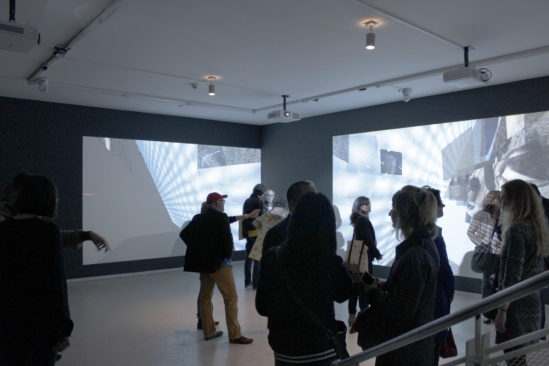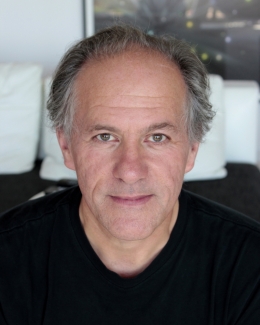UCSB’s Media Arts Czar Named Guggenheim Fellow
George Legrady to Craft ‘Aesthetic Metavision’ Art Experience

George Legrady, chair of UCSB’s Media Arts and Technology (MAT) doctoral program, has recently been named a Guggenheim Fellow. Out of the 3,000 applicants considered for disciplines like natural sciences, visual arts, cinema, and musical composition, Legrady was one of 178 to receive this year’s fellowships. To be considered, one must first produce advanced creative material in the arts, as well as show exceptional promise for a creative scholarship.

Born in Budapest, Hungary, Legrady grew up in Montreal, Canada until he moved to California to pursue a master of fine arts degree in photography from the San Francisco Art Institute.
Although Legrady began in the field of fine arts photography, he transitioned to digital technologies in the mid-1980s. Now he’s considered a new-media pioneer. His work focuses on photographic-based media, interactive digital media installations, and computationally generated visualizations. The integration of digital processes in his work has expanded his horizon and allowed him to investigate methodologies for new forms of visualization. His pieces are often products of self-organizing systems combined with algorithmically generated visualizations intended to serve as sociocultural narratives.
Projects including “An Anecdoted Archive from the Cold War” (1993), “Slippery Traces” (1995), “Making the Visible Invisible” (2005), and “We are Stardust” (2008) are some of Legrady’s prizewinning pieces. His exhibitions and installations have been featured in the Centre Pompidou, the Whitney Museum of Art, LACMA, and in international museums including the Musée d’art contemporain de Montréal and the Museum of Contemporary Art Taipei.
Receiving the fellowship will allow Legrady to continue working on his new piece, “Aesthetic Metavision,” which is an extension of his piece, “Swarm Vision.” Legrady explains, “This proposed project is to be a state-of-the-art installation, a self-contained, dynamic visual ecosystem consisting of multiple robotic cameras that continuously scan the space they inhabit in search of interesting subject matter.” The viewer will be completely surrounded by screen projections that act as part of a virtual reality scene.
His goals, Legrady says, “are to introduce and engage the public in experiencing how such an autonomously driven artwork functions. I am also interested in the discovery opportunities of how such a dynamically performing system guided by software based on my own aesthetic and conceptual preferences may reveal ways of seeing and representing the world that I would not have considered otherwise.”



